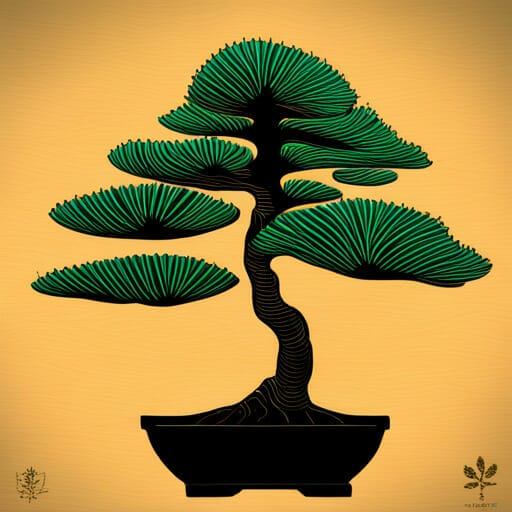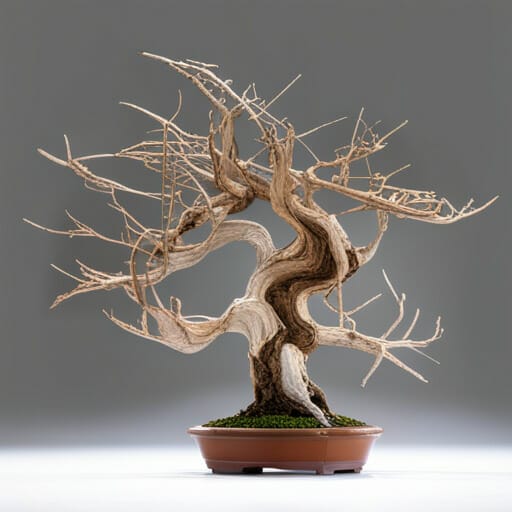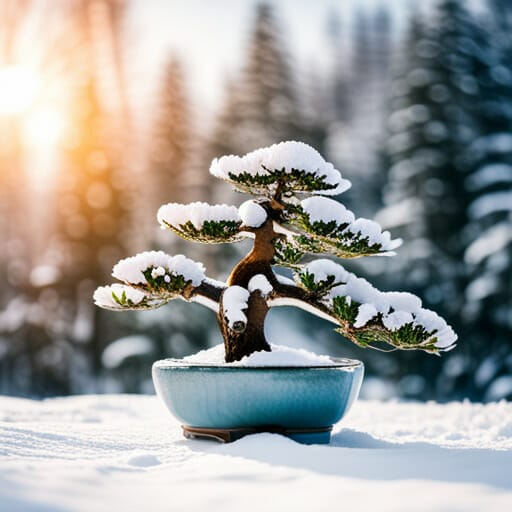In the intricate world of bonsai trees, the delicate dance between life and dormancy unfolds with captivating beauty. Like miniature works of art, these trees possess a mysterious aura, their branches and leaves sculpted by the hands of time. Decoding the signs of life and dormancy in bonsai trees is no simple task, yet it is a pursuit that offers great rewards for enthusiasts and caretakers alike.
Imagine a deciduous bonsai tree, standing tall and proud, its branches adorned with vibrant foliage that dances in the breeze. As winter approaches, this majestic tree undergoes a transformation, shedding its leaves and retreating into a state of dormancy. The signs of life are subtle but unmistakable – branches that bounce back when gently bent, a trunk that exudes a fresh green hue when scraped. These telltale indicators serve as beacons of hope, assuring us that the tree is merely resting, conserving its energy for the spring awakening.
Conversely, a dead bonsai tree tells a different story, one of brittle branches that snap under the slightest pressure, a trunk that reveals a dry, lifeless interior. The absence of vibrant colors and the loss of vitality leave no room for doubt. It is a solemn reminder that life, too, has its limits.
For evergreen bonsai trees, the cycle of life and dormancy takes on a different rhythm. With foliage that persists throughout the year, these trees remain evergreen, tirelessly harnessing the power of photosynthesis to sustain themselves. Yet, even in their perpetual state of vitality, signs of distress can emerge – the uneven loss of needles, a reddish hue that hints at an underlying ailment. And when the final curtain falls, and the tree relinquishes its last remaining needles, the truth is revealed – a once vibrant evergreen has succumbed to the inevitable.
In this article, we will embark on a journey of discovery, exploring the signs of life and dormancy in bonsai trees. By uncovering the secrets of these miniature wonders, we hope to equip caretakers with the knowledge needed to nurture and protect these precious creations. Through careful observation and a deep understanding of their needs, we can honor the spirit of the bonsai and ensure its enduring beauty for generations to come.
Contents
- 1 Quick Points
- 2 Signs of Live Bonsai
- 3 Signs of Dead Bonsai
- 4 Determining Evergreen Health
- 5 Frequently Asked Questions
- 5.1 Can a bonsai tree die from being dormant?
- 5.2 How can I protect the roots of a deciduous bonsai tree during winter dormancy?
- 5.3 How long does it take for deciduous bonsai trees to go dormant?
- 5.4 What is the significance of uneven needle loss in evergreen bonsai trees?
- 5.5 Are there any specific techniques to promote new needle growth in evergreen bonsai trees?
Quick Points
- Determining if a bonsai tree is dead or dormant can be difficult
- Deciduous bonsai trees shed leaves in the fall and go dormant in winter
- Dormant deciduous trees bounce back when bent and have green/sappy inner trunk when scratched
– Evergreen bonsai trees have foliage year-round and do not completely go dormant in winter
Signs of Live Bonsai

The signs of a live bonsai tree can be determined by observing the ability of its branches to bounce back when bent and the green and sappy inner trunk when scraped.
When bending the branches, a live bonsai will exhibit flexibility and resilience, as the branches will spring back to their original position.
Additionally, when scraping the inner trunk, a live bonsai will have a green and sappy appearance, indicating that it is still actively transporting nutrients.
These signs indicate that the bonsai tree is healthy and thriving.
By recognizing these signs, bonsai enthusiasts can ensure the well-being of their trees and provide the necessary care and attention for their continued growth and development.
Understanding these signs is crucial for maintaining the beauty and vitality of bonsai trees.
Signs of Dead Bonsai

Signs of a dead bonsai tree can be identified through the brittle nature of branches when bent, as well as the dry and brown appearance of the inner trunk when scraped, indicating a lack of vitality. When attempting to determine the health of a bonsai tree, it is crucial to carefully assess these physical characteristics.
If the branches break easily and do not bounce back when bent, it is a strong indication that the tree is dead. Additionally, a dry and brown inner trunk, as opposed to a green and sappy one, further confirms the absence of life.
These signs serve as valuable indicators for bonsai enthusiasts who seek to care for and preserve the health of their trees. By recognizing the signs of a dead bonsai tree, one can take appropriate action to ensure the continued beauty and vitality of these cherished plants.
Determining Evergreen Health

Evergreen trees can be assessed for their overall health and vitality by considering various factors related to their appearance and growth patterns. One important aspect to evaluate is the foliage of the tree. Healthy evergreen bonsai trees experience uniform needle drop throughout the tree, indicating that old needles are being shed as new ones grow. However, if there is uneven needle loss, especially from the tip of branches, it may indicate an unhealthy tree. Additionally, the presence of red needles or complete loss of needles can be a sign of a dead evergreen bonsai tree. It is important to note that conducting bending and scratch tests on evergreen bonsai trees may be misleading. Instead, it is recommended to perform a visible test and observe if new needles grow in the spring.
| Healthy Evergreen Bonsai Tree | Unhealthy Evergreen Bonsai Tree |
|---|---|
| Uniform needle drop | Uneven needle loss |
| Presence of new needles | Red needles or complete loss |
| Foliage appears vibrant | Foliage looks dull or sparse |
| Branches are flexible | Branches are brittle |
Frequently Asked Questions
Can a bonsai tree die from being dormant?
Dormancy is a natural state for bonsai trees during winter, akin to a deep slumber. While they may appear lifeless, bonsai trees do not die from being dormant. Instead, they conserve energy and prepare for the upcoming growing season.
How can I protect the roots of a deciduous bonsai tree during winter dormancy?
To protect the roots of a deciduous bonsai tree during winter dormancy, it is important to provide insulation and prevent freezing. This can be done by wrapping the pot with insulation material or burying it in the ground.
How long does it take for deciduous bonsai trees to go dormant?
Deciduous bonsai trees go dormant in response to shorter daytime, lower temperatures, and reduced light intensity. The duration of dormancy varies depending on the specific tree species and environmental conditions, typically lasting several months.
What is the significance of uneven needle loss in evergreen bonsai trees?
Uneven needle loss in evergreen bonsai trees indicates an unhealthy condition. It may suggest issues such as nutrient deficiencies, water stress, or disease. Further examination and intervention may be necessary to restore the tree’s health.
Are there any specific techniques to promote new needle growth in evergreen bonsai trees?
Promoting new needle growth in evergreen bonsai trees can be achieved by providing optimal growing conditions, such as proper watering, balanced fertilization, sufficient sunlight, and maintaining the appropriate temperature and humidity levels. Regular pruning and repotting can also stimulate new growth.




